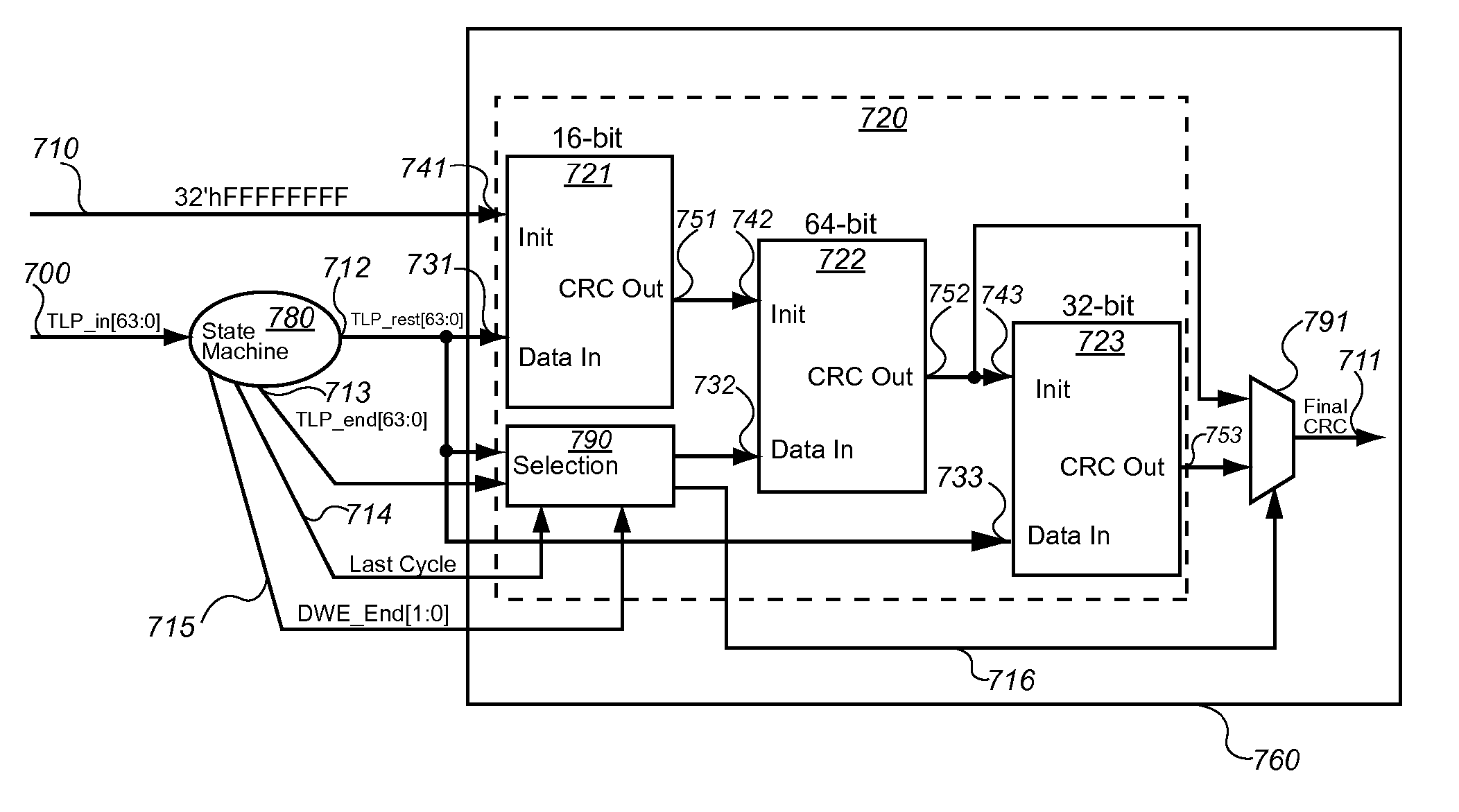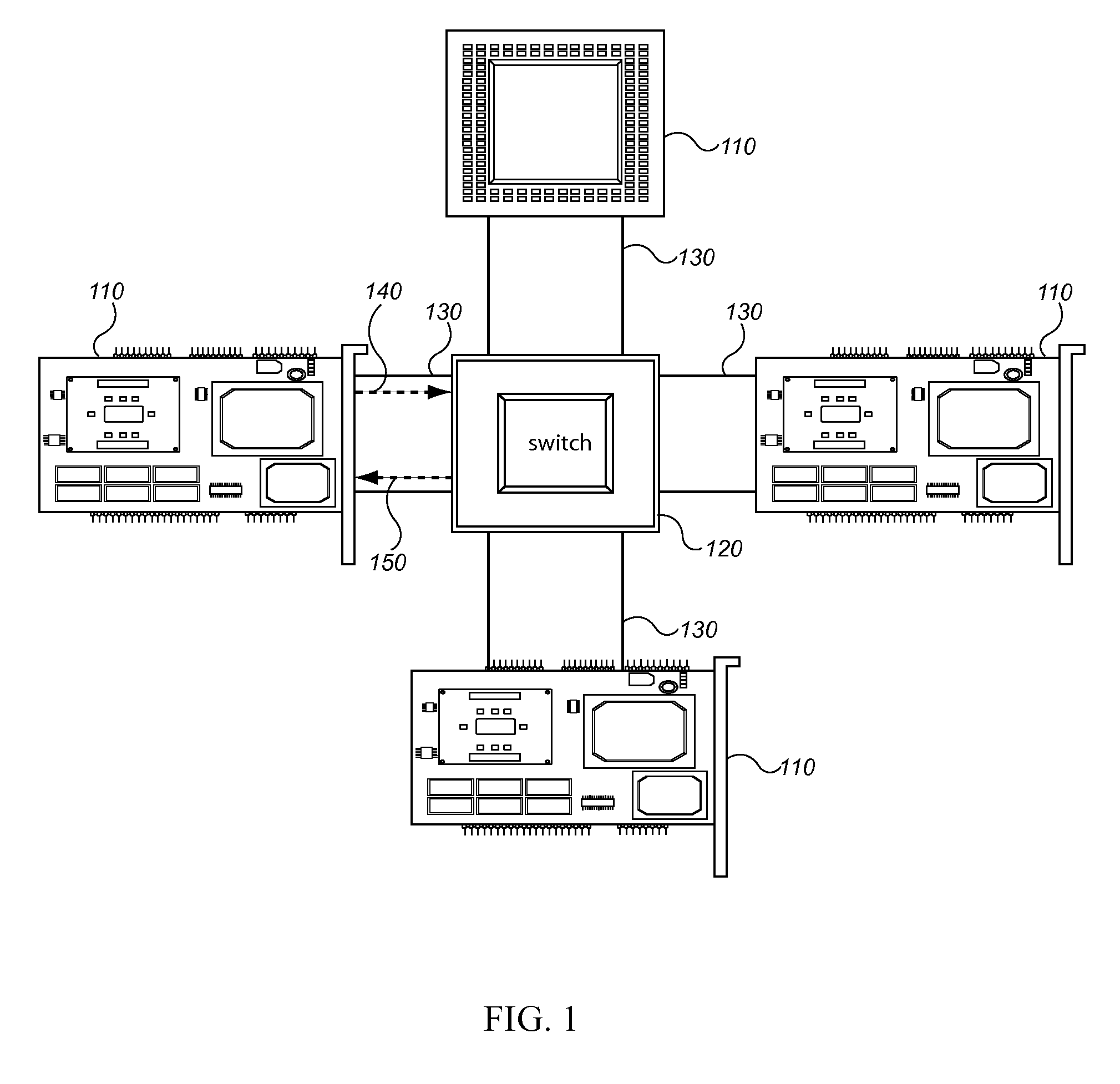System and Method of Processing Received Line Traffic for PCI Express that Provides Line-Speed Processing, and Provides Substantial Gate-Count Savings
a technology of received line traffic and pci express, applied in the field of pci express model of data transfer, can solve the problems of limiting the functionality that it may provide, increasing its bus speed and scalability, and increasing cumbersomeness, and achieve the effect of less latency
- Summary
- Abstract
- Description
- Claims
- Application Information
AI Technical Summary
Benefits of technology
Problems solved by technology
Method used
Image
Examples
Embodiment Construction
[0026] The invention relates to a system and method for processing back-to-back TLPs in a PCIe design. As shown in 1, a current PCIe architecture (or design) is illustrated. A PCIe architecture 100 typically comprises a plurality of PCIe compliant devices 110 that are linked together by a shared PCIe switch 120. The PCIe design further comprises a plurality of data buses 130 that are capable of transmitting bits of information in a serial configuration. The data buses route 140 data from the PCIe compliant devices to the shared PCIe switch. The shared switch routes 150 the TLPs and establishes point-to-point connections between any two communicating devices within the PCIe design. Communicated data in the PCIe design is broken up into TLPs 200. As shown in FIG. 2, a TLP 200 is comprised of a STP byte 201, which communicates to a receiving device that the TLP 200 is beginning. The TLP 200 is also comprised of an END byte 207, which communicates to a receiving device that the TLP 200 ...
PUM
 Login to View More
Login to View More Abstract
Description
Claims
Application Information
 Login to View More
Login to View More - R&D
- Intellectual Property
- Life Sciences
- Materials
- Tech Scout
- Unparalleled Data Quality
- Higher Quality Content
- 60% Fewer Hallucinations
Browse by: Latest US Patents, China's latest patents, Technical Efficacy Thesaurus, Application Domain, Technology Topic, Popular Technical Reports.
© 2025 PatSnap. All rights reserved.Legal|Privacy policy|Modern Slavery Act Transparency Statement|Sitemap|About US| Contact US: help@patsnap.com



